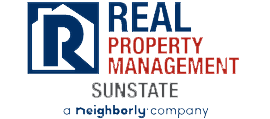Real Property Management Sunstate Orlando
2170 W State Road 434
Suite 386
Longwood, FL 32779;
(407) 834-7600
Real Property Management Sunstate Jacksonville
10365 Hood Rd
Suite 107
Jacksonville, FL 32257;
(904) 300-1100
Real Property Management Sunstate Palm Beach County
5730 Corporate Way
Suite 120
West Palm Beach, FL 33407;
(561) 252-7363
Real Property Management Sunstate Boca Raton
2255 Glades Road Suite 324A
Boca Raton, FL 33431;
(561) 252-7363
Real Property Management Sunstate Wellington
1035 S State Rd 7 Suite 315
Wellington, FL 33414;
(561) 252-7363
Real Property Management Sunstate Palm Beach Gardens
3801 PGA Boulevard Suite 600
Palm Beach Gardens, FL 33410;
(561) 252-7363






